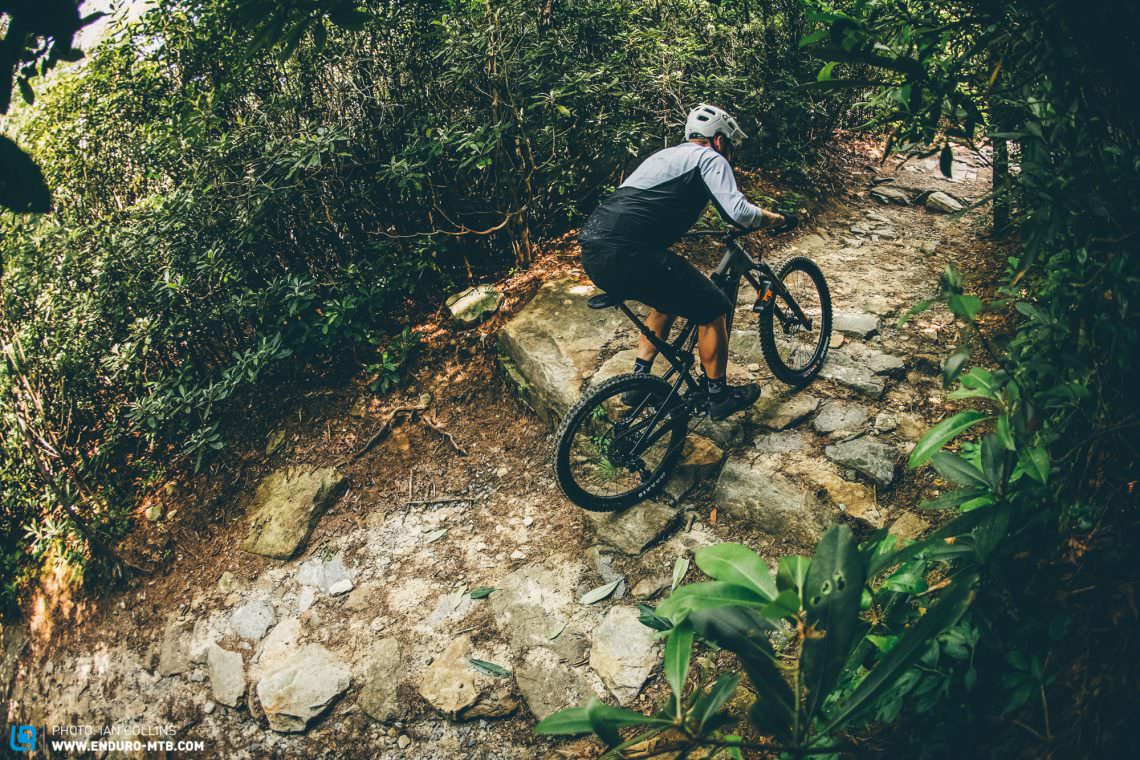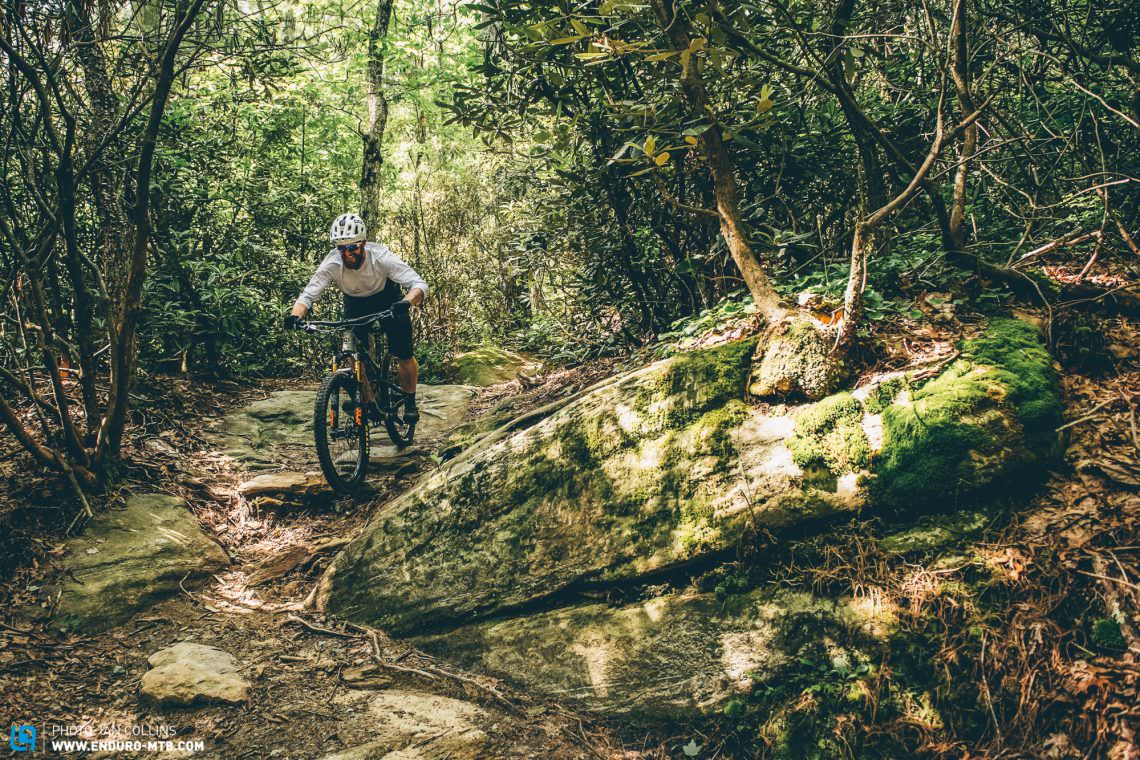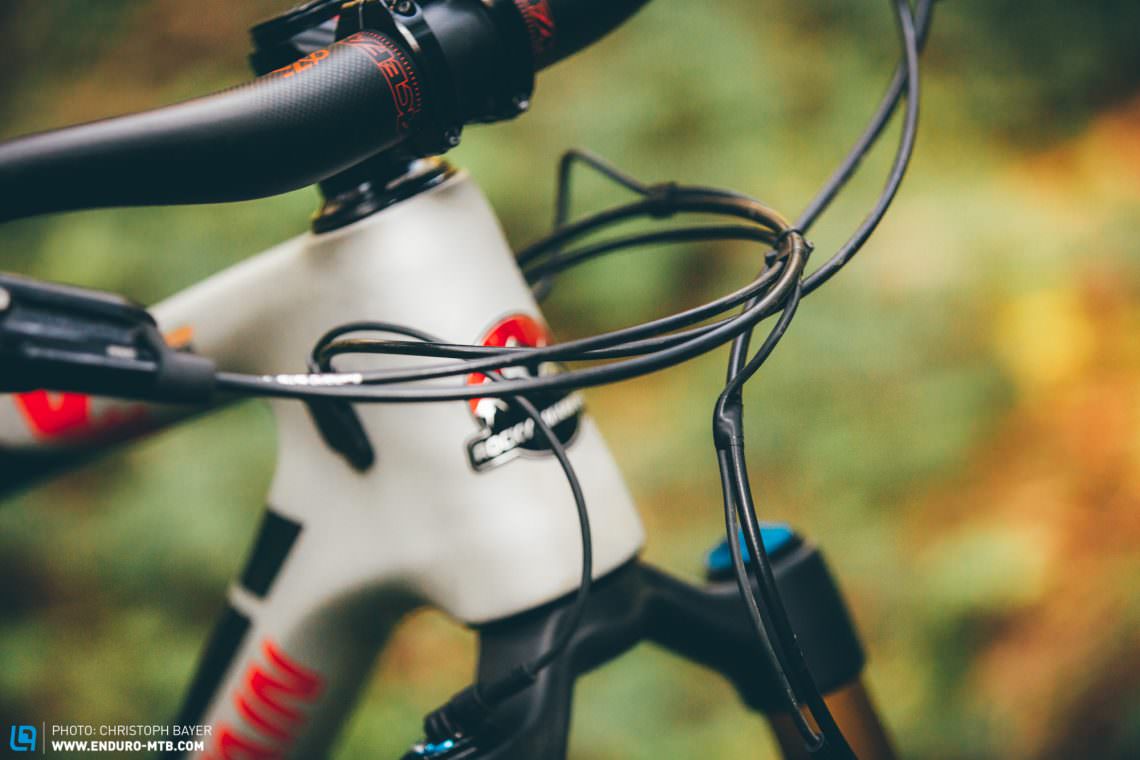The FOX Live Valve system on the trail
From fast flowing trails and rough alpine descents to moderate trails, we’ve ridden it all with a FOX Live Valve equipped Rocky Mountain Altitude.
The Rocky Mountain was the ideal test bike, as we were familiar with it from previous reviews, without the Live Valve. At the time we criticized the rear end of wallowing too much on climbs. We concluded that the Altitude was a great all-rounder but only an average climber.

But that changed within the first meters riding the bike with the Live Valve system. Switching on is confirmed by a short click. We select level two and start pedalling. Important to know: the five modes do not change how much the system closes, but only at what force it opens.

On the first kilometres of asphalt to the start of the trail, the bike is completely stiff. A few potholes already demonstrate how well the system works. When we reach the start of the climb, we don’t recognize the Altitude from our previous review. Wallowing? What wallowing? The rear end remains high in its travel, no rocking felt or visible. However, the force required to open the suspension is already quite high at level two. The bike felt a bit harsh and after a while, we switched back to level one. Once we did so, the suspension worked perfectly. We weren’t able to notice a transition from closed to open. It becomes clear how well the system works when you switch it off completely. The Altitude then loses its light-footedness and climbs much less efficiently.

When descending it strongly depends on which trail and which gradient you are on. On a steep, rough trail, for example, the system opens at the start and remains open for the entire time. However, when the trail goes up and down and you need to sprint in between, the Live Valve reacts very quickly and efficiently – depending on the selected mode. The closed suspension motivates you to get out of the saddle and sprint up a hill. We particularly liked the system on flowing trails. In a higher setting (three or four) the bike turned into a rocket. On smaller hits, the system remained closed and we could build up enormous speed by pumping the bike through dips and berms.

However, we found the clearly audible clicking of the system a bit disturbing. Riders who like a quiet bike will be disappointed. Even the soft cables tend to rattle, so we taped them to brake and shifter cables. What we didn’t like so much was the very stiff closed mode on the fork. In general, every bike manufacturer can choose how much the FOX system closes. From completely locked out to only moderately pronounced platform damping. For this reason, we had the setting changed so that the fork valve closed less. Especially on technical climbs, we like the fork to remain somewhat active, keeping the seat angle steeper and more weight on the front wheel.

Speaking of stiffness. During our review, we were a bit annoyed by the fact that we found level two was already very pronounced and that level four and five weren’t actually useful in a meaningful way. For this reason, FOX installed a software update towards the end of the review, which changed the trigger sensitivity as well as the angle and duration which the system opens. So level two felt more like level one did before and we could also use mode three and four from time to time. Currently, the different modes can only be configured by the bike manufacturers themselves, but it can be assumed that riders will be able to configure their bikes via an app in the future.

Our opinion about the new FOX Live Valve
Unlike an electronic drivetrain, the FOX Live Valve offers a real advantage and takes mountain biking efficiency to a new level. It made the Rocky Mountain Altitude an even better all-rounder that, thanks to the system, climbed more efficiently without sacrificing downhill performance. However, the current lack of integration and the clearly audible click of the valve disturbed us. We would also like to avoid having to choose the different modes on an automatic system. Last but not least, there is the high price, but this exclusivity will only make the system more desirable for tech geeks and early adopters. We see a lot of potential for the future, and the system makes a lot of sense particularly for eMTBs with their integrated battery.
More info at: ridefox.com
Did you enjoy this article? If so, we would be stoked if you decide to support us with a monthly contribution. By becoming a supporter of ENDURO, you will help secure a sustainable future for high-quality mountain bike journalism. Click here to learn more.









